This is my first time on the forums so I didn’t know where to post this. Thank you for the information :]
I’ll just dump links to all of my reports.
AN/MPQ-64 Missing Aircraft Identification // Gaijin.net // Issues
AN/MPQ-64 Radar Scan Rate Too Slow // Gaijin.net // Issues
These are great reports! Has anyone of them been fixed yet? I do feel the radar is quite lacking so far…
Has anyone worked on similar reports for the tansam?
The radar on it seems even worse than the slamraam one and i find it hard to believe it scans as slowly as it does currently
No as far as I am aware.
I believe some but I do not have info on it.
Could you share the source on the back radar? At least I couldn’t find much information about it at all. The only thing I can think of that it houses the mentioned AN/TPX-56 IFF antenna, which is L-band (IEEE), or D-band (NATO). So it should at least not have the same tracking qualities as the front ESA (not to mention it’s just smaller). I have not been able to find any reference to said “virtual” doubling of rpm, other than from radartutorial (which mentions 15rpm physical and 30rpm virtual instead, which looks to be what Gaijin uses too).
Most new information I found about the radar comes from a modified version the Sentinel radar for meteorology, in the form of the MWR-05XP (so not everything may be 100% the same, but the ESA part I can say is likely identical). I think the dual beam thing is a misinterpretation of the term back-scan, which these sources very nicely clarify does not mean that:
Spoiler


This confirms too that the “electronic back-scan” ability of the ESA is very limited (±3.5°), which means it’s unable to perform what is TWS ESA in-game. So only TWS updates once per rotation.
In any case, just as the product cards also say, scan zone is too large at the moment. The radar only is able to do a 22x360° zone in 2s (at 30rpm). If the back radar also scanned, this would be 1s, but it’s not mentioned, either because in the meteorlogical configuration it is unused (though interestingly the back antenna was not covered in paint despite that then) or the antenna is not capable of scanning for targets (or at least not accurate enough). What makes more sense to me is that the (supposed) IFF antenna in the back transmits high elevation coverage beams (so inadequate for getting elevation data) and is only looking to receive IFF responses (from which it could get friendly target position).
I guess what I also have to mention is that apparently the radar has a separate actuator arm which is able to swivel the radar around in a 45° arc (at a somewhat slow rate) to perform a directional scan only I guess.
The AN/TPX-56 is the box located to the right of the main array, it is not the back radar panel.
To that same end, the mechanical scan rate only takes into account the main array being scanned, this is why it can scan between 3 and 30 RPM variably, if the back scan was included, it being able to reach 3 RPM makes no sense, it would have to be moving at a glacial rate.
To that same end, videos of the system functioning that I’ve hand timed have the panel rotating at 30 RPM quite often, or most commonly 25 RPM it seems like.
I’ve already reported such above and such was accepted. However, like the actual max range of the system, gaijin has chosen to just ignore most of the reports I made even though they were accepted.
Same deal, there is no documentation that gives the actual performance of the rear radar beyond it’s performance being considered equal to the main array’s rapid mechanical scan abilities, which your source also corroborates.
This is speaking about the main array and it’s ability to dwell on areas, aka, split off a beam and bore a point while the main array continues to scan.
As stated above, the IFF interrogator antenna system is on the front of the system to the right of the main array.
Pretty sure thats talking about the elevation arm on the entire unit.
Overall, you seem to be assuming that the document you posted it speaking widely about the rear panel, when in reality this document is simply speaking about the entire system, primarily the main array.
wait dude ur actually right, i was so confused and was doing research for the past hour hour on it lol. the “back” radar that we see indeed seems to be the IFF and not the radar responsible for scanning behind it. How the CLAWS radar (AN/MPQ-64) scan behind itself is using something called Phased-Array-Radar or something and what it does is sending a beam (only ±3.5 degrees, which is rather small but still useful) directly behind itself using the main radar dish. It’s crazy cool to me that it can do that without needing another radar “panel”.
copied/paste my comment from another post btw
No, I am assuming indeed it’s talking about the main array (the large frontal square). The reason why I considered the rear (smaller) panel to house the TPX-56 is because it precisely doesn’t mention this backside array at all. But if the TPX-56 is housed elsewhere, I guess then that changes things again.
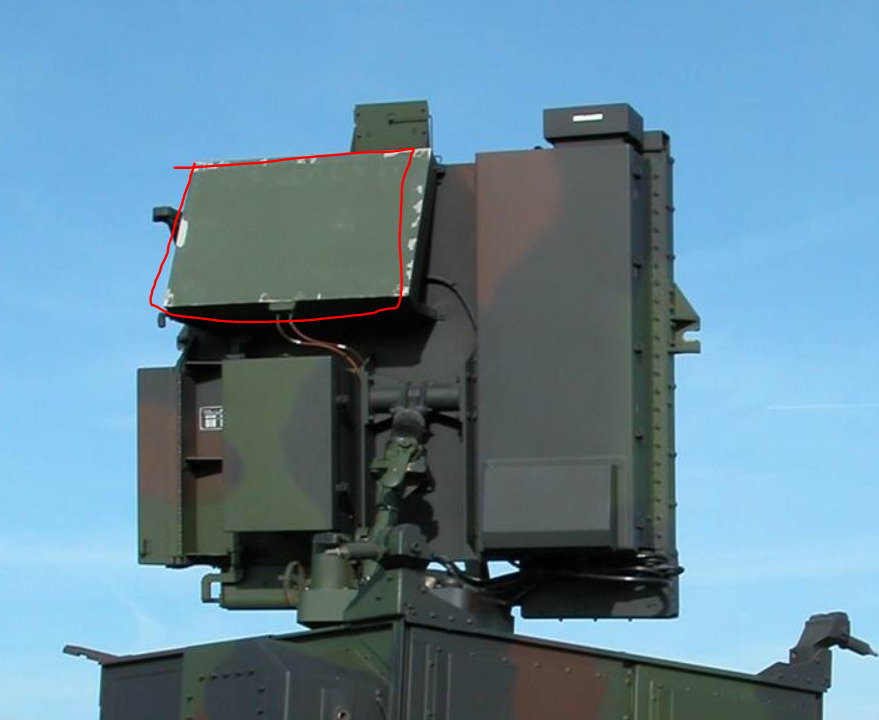
Anyways (on the backside), so this is part of the main array then? Is this also ESA? The surface is quite different from the front ESA judging from pictures. Often even being painted over with camo (whereas the front isn’t at all). In some cases it isn’t painted over with camo and has a similar color to the front array (as is with the MWR-05XP).
Do note that in this case it’s modified for meteorological purposes, so dwell time may be of huge importance. This may definitely not be normal for MPQ-64 tho.
This is still assuming with back-scan you mean a physical rearward facing antenna doing scanning backwards. But the only references to the “back-scan” with this radar relate only to the ability to slightly steer the beam in azimuth for increasing dwell time. And it does say “electronic back-scan”, not sure what is electronic about having a secondary back facing antenna. In some other radars with TWS ESA like beahvior (at least TRML-4D) it specifically mentions terms like look-forward and look-backward, or something similar (with demo video showing such behavior).
Spoiler

note it also says electronic scanning in azimuth over a limited sector (using frequency hopping, which the other source I put earlier is good for ± 3.5° or ~7° swath).
Does it? It only seems to talk about the frontal array. I so far have not read about the sentinel having a secondary rearwards facing antenna. I mean, they would probably mention it right? At this point I am just confused. Because initially I though that the rear facing one was ESA too, because it’s a rectangular box, so why not, but then I never found any reference for it being the case. So if you have something explicit stating that, could you please share.
Maybe, but doesn’t it move more than 45°? Not to mention they mention scanning rate with the arm, which is weird to do like that. I mean maybe it’s just what the scientist did (to get more elevation), but from research papers using this radar, they seemed to never really scan that high, I think they did at most +40°, which can be achieved by electronic steering alone.
gona dump this here, not a lot of useful info but i dont wanna go looking for it again
Well, not quite I think. The back-scan term needs to not be taking in the sense that it’s facing backwards, but rather that it’s scanning in opposite direction to the mechanical scan direction. It seems to make more sense when putting together the sources I found. Hence “back” scan as in scanning in backwards rotation. What is for sure is that at least isn’t scanning to the rear using the array on the front. ESA radars at most only effectively steer their beam 70° off axis. And I have never heard of radar scanning something using a backlobe.
But anyways you made me think of another possibility regardless. So if that rear panel is not the IFF and part of the main array, it could mean that the front part is scanning like normal (as in game) but the rear is only for “back-scanning” visited targets. Can make sense, that way you don’t need as large an array since detection was already done, and not to mention it can increase dwell time to partially make up for lower power (since it’s smaller).
I really want to see some documentation or reference to such behavior though. It’s unique enough to be mentioned right?
In the end I still think that rear angled rectangular panel is the IFF antenna. Because nothing else really looks like an antenna really. That could explain to me as well why in some pictures it seems to happily painted over with the same pattern as the rest of the system. Because IFF would be handled by a separate station instead, so the IFF on the Sentinel (or multiple) would not be needed.
Spoiler
Painted over panel. Now I know there are paints which are (more) radar transparent, but it seems odd for it to then be used for this small rear panel and not the front. It is even weirder if they had special paint for only that part as well, while they could leave it unpainted or similar to the front array (which has a much larger surface, so leaving that without camo pattern is odd then, if you cared enough to add a camo pattern to the smaller rear panel).
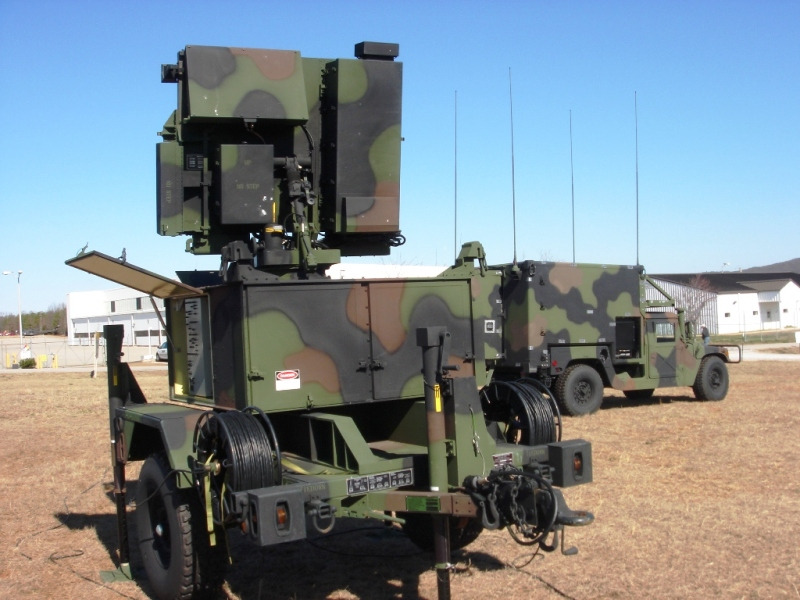
Kinda suprised they haven’t implemented it yet. Though I am guessing the problem is that they have no system currently to do the TWS outside the selected scan zone without TWS ESA (which is not implemented on any ground radar atm, and seems like the Sentinel doesn’t have it anyway, at least the constant instant updating part).
False statement.
Pantsir
CS/SA5
Tor-M1
HQ-17
Buk
They are not TWS ESA as on air radar however, I believe these just work by scanning in like a regular M-scan radar but really really fast to simulate TWS ESA (using regular TWS logic) before it even was a proper mechanic (with the Pantsir or Tor-M1, don’t remember).
By all means they are currently not working realistically, believe last time I calculated, the Pantsir is scanning an entire frontal sector (with the tracking radar) at 10000°/s+ scanrate. No radar will have any functional range at such short dwell times.
You missed an update, they were migrated to ESA some time ago.
Cant open the game rn, but code part from pantsir
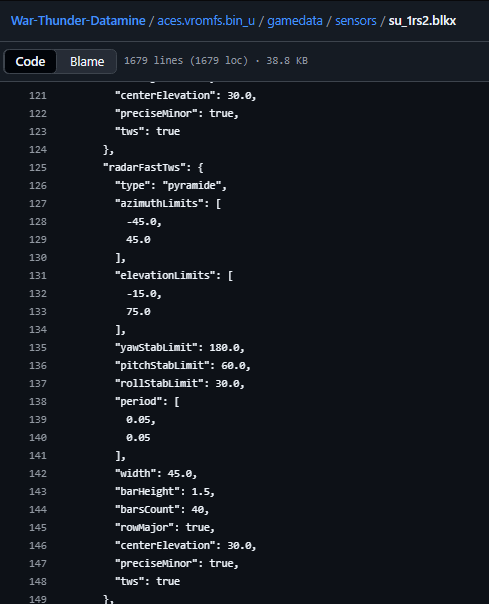
Normal scan speed was increased to 1s, and 0,05 for Pantsir/CS/Buk, and 0,025 for Tor/HQ ESA was added.
(To be frant, Buk was already on ESA code, so no migrating took part there)
It cant be anything but a ESA unless they don’t want to call it “electronic back scan”.
Given other sources for the system state a mechanical scan rate of up to 30 RPM such is accurate.
Thats the only definition at play, its the exact same as other system offerings.
Thats the 3d beam forming function, back scanning abilities is a rear facing array and has always been that.
Its a rear facing “Electronically” scanned array.
Hensoldt calls it “Look forward and look back” its functionally identical and the terminology is also functionally identical.
You did read the source you posted … right?
It means that it’s volume at play is equal to and opposite to the main array, aka it is fixed and faces backwards, and thus, scans at the same rate at the main array’s FOV but backwards.
So funny bit about that, it might actually be this.
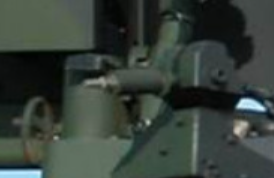
Tiny little hydraulic ram that would just move the mount a bit. Out radar in game seems to lack this.


And just for further clarification, the rear panel is physically bolted to the array, there is no way for it to acuate, it’s ability to see is predicated on the angle of the main array and it’s ESA abilities.
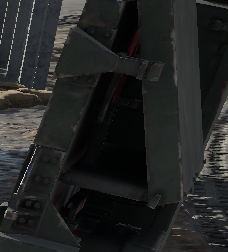
Also managed to find the respective changelog
(the reduction talked here never happened, update time on the ESA is the same as it was before, detection time of the new targets increased, due to searching increasing to 1s)
Wow how did I miss this, well I stand corrected then. It scans at a more “normal” rate now then. Well anyways, sucks ass that Gaijin hasn’t added it to other radars. Probably their excuse now is that it’s limited to just “tracking” radars.
They added it on dev to TanSAM for one patch iirc, it worked, but then they just removed it.
